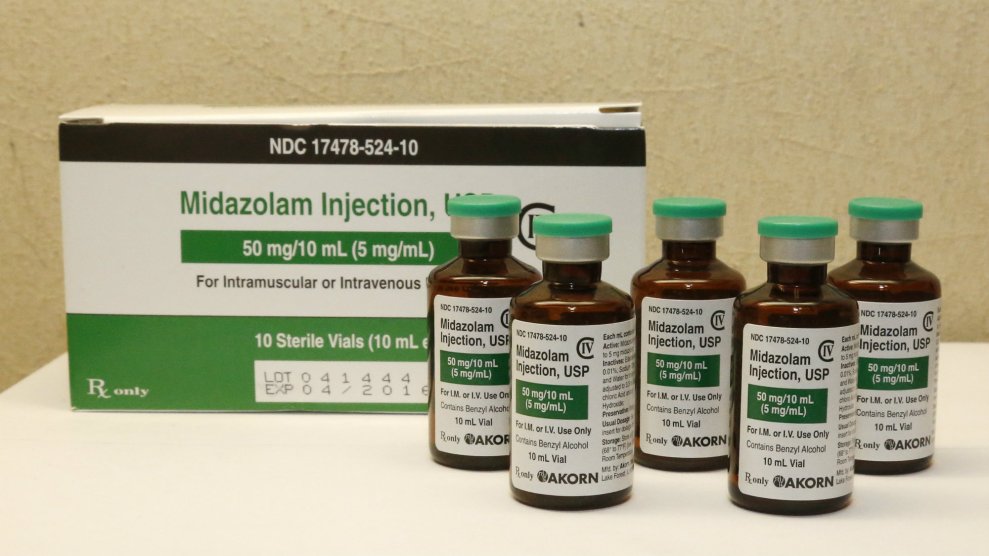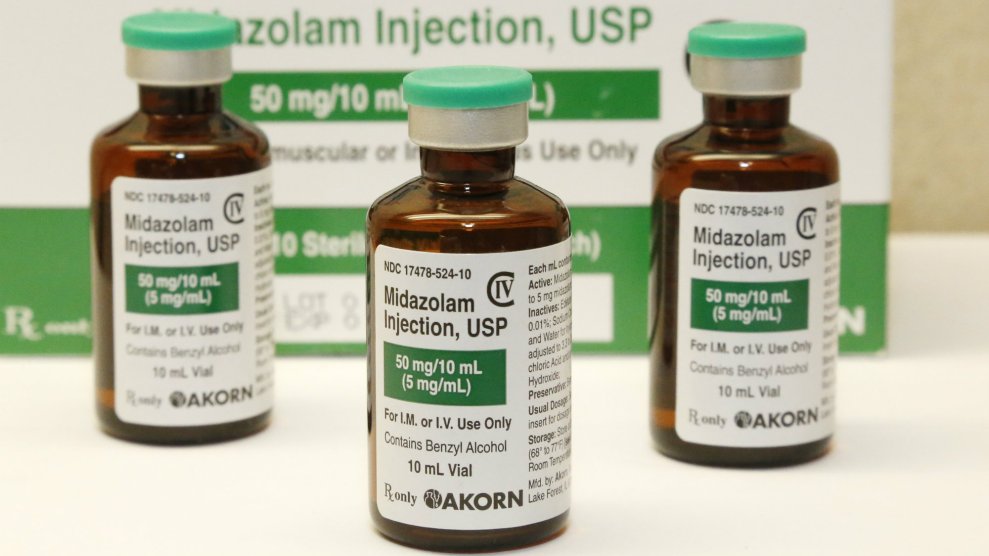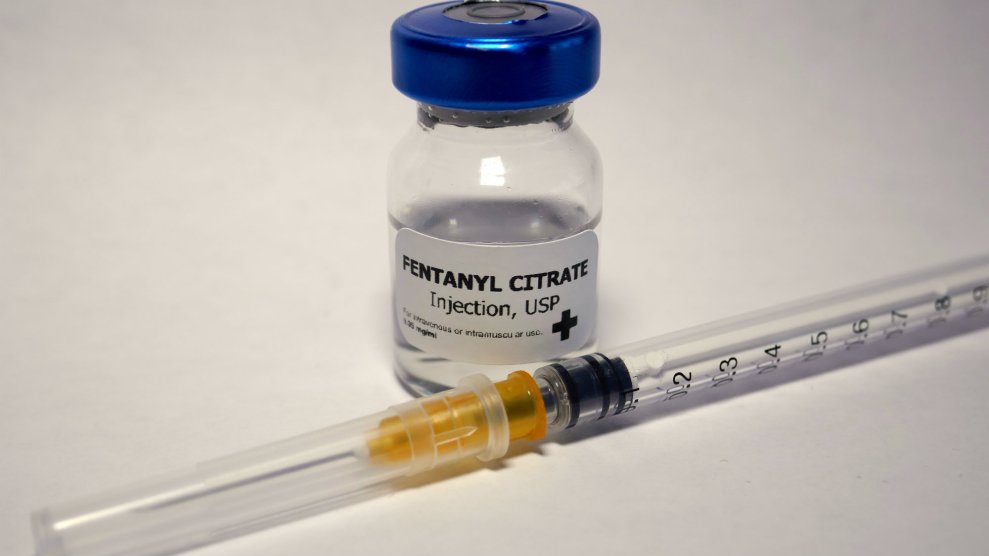
Sue Ogrocki/AP
A judge has made it nearly impossible for the state of Nevada to execute a death row inmate. Clark County District Judge Elizabeth Gonzalez banned prison officials from using its supply of midazolam, a controversial sedative responsible for several botched executions in the past, to execute Scott Dozier—who has given up his appeals and has asked to be executed.
The ruling comes after a monthslong legal battle between Nevada and Alvogen, the company from which the state obtained the drug. Just hours before Dozier was scheduled to be executed in July, the company filed a lawsuit against the state. As Mother Jones reported, Alvogen alleged Nevada had improperly obtained the drug:
The company is alleging that despite a clear warning its product could not be used in executions, Nevada purchased the drugs by “subterfuge.” The suit says the state purchased the drugs through an “unsuspecting intermediary” who would not have sold the product if it had known the drugs were going to be used to put Dozier to death.
Earlier this month, Nevada’s prison director, James Dzurenda, testified that he ignored letters from Alvogen. He messaged Linda Fox, pharmacy director at Ely State Prison, where Dozier is being held, about the letters but did not return the sedatives. “Text messages between Fox and Dzurenda also support Alvogen’s allegation of a scheme,” Gonzalez wrote in her ruling. “The state did not acquire the Alvogen midazolam product in good faith, and it did so knowing that it violated Alvogen’s property rights.”
The state has not conducted any executions since 2006, when Daryl Mack was put to death by lethal injection. Dozier has been on death row since 2007 for the 2002 murder of Jeremiah Miller. In 2016, against the advice of his lawyer, he opted to skip the remainder of his appeals and asked to be put to death.
It’s unclear how the state will now proceed, but Nevada’s Department of Corrections has said it will only move forward with the execution if it has all three drugs in its protocol.
















